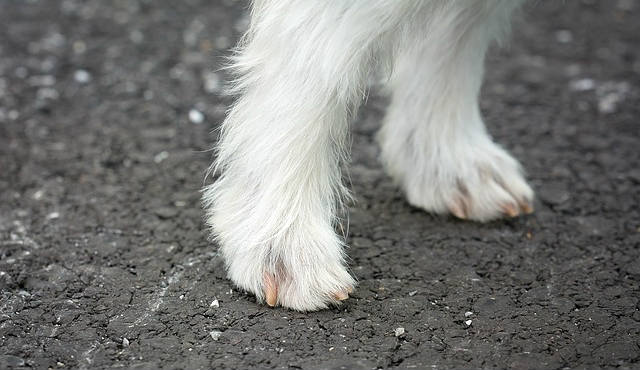Hi Geri,
Thanks for your question.
Any mass on the nail bed needs to be identified and the results need to be confirmed. You say in your question that a biopsy was performed which means that the veterinarian surgically removed a piece of the mass and sent it to a pathologist for identification. I am going to assume that those results are unambiguous and that the diagnosis you are mentioning in your question is confidently confirmed. The reason I say this is that there are dog nail bed tumors that are malignant and can spread around the body. A common one is a nailed melanoma which carries a guarded prognosis as it can spread to other organs in the body and have a fatal outcome. So I will first recommend that you review the results of the tests and make sure there are no assumptions being made in this case. Please confirm that this is, in fact, a benign papilloma of the nail bed.
Viral nail bed papillomas are growths that do not threaten the life of the bed but create a deviated nail that can be uncomfortable. They are often removed for this reason. I’m going to assume that your diagnosis is confirmed and that you are currently deciding on surgical options.
To address your specific question, when it comes to surgical skill involving a canine nail bed tumor, non-specialized veterinarians will have varied experience and confidence with different procedures. It sounds as though you are getting conflicting opinions about the next course of action and I would encourage you to keep searching for opinions. My personal experience is that I always found it much easier to remove the entire digit (or toe) than to remove the end of it. By doing so, it carries a few benefits. By a full removal, you substantially reduce the chance of leaving some cells in the area that could cause the mass to grow back and necessitate another procedure. For this reason, I would encourage you to consider this but you need to understand that I have not evaluated this lesion and I have no basis for giving the correct advice. I recommend you speak to the veterinarians you’re interacting with and ask about the possibility of recurrence given the location, size and extent of the lesion.
As it pertains to cost, most veterinarians charge based on surgical time. My personal opinion which may not be shared by others is that the time it takes to remove a portion of the toes does not differ much from the time it takes to remove the entire toe. In both cases, you are removing tissue and suturing an area closed. I wouldn’t expect the cost to differ substantially between the two procedures at the same veterinary office. I would also add that of all the digits (or toes) I have removed, I have never received a complaint or concern about a lack of function with the pet’s ability to walk, run or interact with its owner.
When it comes to a lesion that is disrupting healthy tissue and negatively affecting your pet’s life, I often recommend resolving it aggressively so that the chance of it recurring is greatly diminished. In this case, I don’t think there is much difference in removing the very end of a toe and the entire toe. I’ve never experienced a lack in function or comfort. Removing the entire toe may greatly reduce the chance of recurrence and so I would find that option more desirable, but I must say again, with great significance, that I am not the attending veterinarian on this case and I have not examined this lesion. I would highly recommend you follow your veterinarian’s advice if there is an advantage or concern that is brought up which is specific to your case that has not been addressed in my answer.
Thank you for the question. I hope this helps.
Dr. Clayton Greenway
